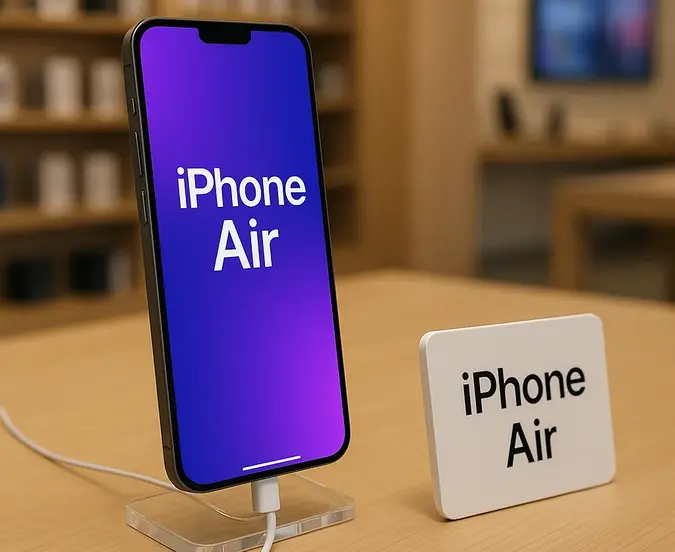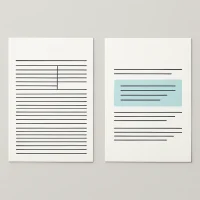When Steve Jobs introduced the original iPhone, he described it as “something wonderful for your hand.” The iPhone Air delivers on that promise with an incredibly thin, lightweight design that feels weightless in your hand—like picking up bowling shoes after finishing a game. The device is effortless to hold while watching videos in bed and so light you forget it’s in your pocket, something that hasn’t happened since the iPhone 5.
However, this remarkable thinness appears to be the device’s only significant selling point, and according to consumer research, it’s not what most people want. A recent CNET survey of over 2,000 smartphone users revealed that the top five reasons for upgrading are price, battery life, storage, camera features, and screen size. Phone thinness ranked among the least important factors, appealing to only about 7% of customers—a statistic that perfectly matches the iPhone Air’s poor sales performance.
Misleading Specifications and Hidden Thickness
Apple’s marketing claims that the iPhone Air is 5.6mm thick, but this measurement is misleading. While the device is indeed 5.6mm at its thinnest point, it measures 11.28mm at its thickest point due to the massive camera plateau on the back. This makes the iPhone Air the seventh thickest iPhone model ever, behind even the 17 and 14 Pro Max models.
The camera plateau is no longer a modest bump—it’s a substantial plateau that’s twice as big as the iPhone 17’s camera system despite having half the cameras. This creates practical problems that Apple doesn’t address in their marketing. Wireless charging mats may not work because the plateau prevents the phone’s back from making contact with the charger. Protective cases leave the camera vulnerable to impacts, and clear cases make the entire device significantly thicker, negating the thinness advantage.
Apple’s approach contrasts sharply with their MacBook Air marketing, where they transparently included both thickest and thinnest measurements. For the iPhone Air, they only highlight the thinnest point, creating a misleading impression of the device’s actual size.
Poor Value Proposition Across the Lineup
The iPhone Air’s $1,000 price tag makes it one of the most expensive iPhones ever, yet it offers significantly fewer features than other models. The device uses the same single camera lens as the $600 iPhone 16e, making it the most expensive iPhone ever to feature just one camera. The previous record was held by the 2018 iPhone XR at $750.
When compared to last year’s iPhone 16 Pro at the same $1,000 price point, the Air falls short in almost every category. The 16 Pro offered 13% more battery capacity, three camera lenses enabling advanced photography features, USB 3 support, faster wireless charging, adaptive True Tone flash, a LiDAR scanner, stereo speakers, four microphones, and mmWave 5G support. The Air’s only advantages are an 18-megapixel selfie camera, A19 Pro chip, slightly larger screen, and double the storage space.
Even the iPhone 16 Plus at $900 last year provided better value with a larger screen, bigger battery, and ultrawide camera. For four out of the five most important user features (price, battery life, camera features, and screen size), the 16 Plus outperformed the Air.
Technical Compromises and Limitations
The iPhone Air’s A19 Pro chip is technically faster than the standard A19, but it’s configured with only five GPU cores instead of six, resulting in 10-15% less graphics performance than the same chip in iPhone 17 Pro models. Without the Pro models’ vapor chamber cooling system, the Air overheats faster and throttles performance sooner during intensive tasks.
Apple’s exclusive C1X modem prioritizes efficiency over speed, using 30% less power than Qualcomm’s X71 modem but failing to achieve the same wireless speeds. It doesn’t support mmWave 5G, limiting connectivity options compared to other models. While this may improve in future iterations, current users get inferior performance.
The device’s battery, while larger than expected at 3,149mAh, still falls significantly short of other models. It provides 3 hours less offline video playback than the iPhone 17 and 6 hours less than the 17 Pro, prompting Apple to sell a $100 MagSafe battery pack exclusively for the Air—something they don’t offer for any other model.
Sales Performance and Market Response
The iPhone Air’s poor sales performance is evident across multiple metrics. On pre-order day, the Air was readily available while all iPhone 17 Pro Max configurations showed delays of one week or more within the first hour. iPhone 17 and 17 Pro models sold out of certain configurations within a week, but the Air remained available for launch day delivery throughout the entire period.
Apple has reportedly cut iPhone Air production by 1 million units while increasing production for every other iPhone 17 model due to their popularity. Accessory sales data from Dbrand shows the Air accounting for only 5% of iPhone 17 case sales, compared to 56.5% for the Pro Max, 31.5% for the Pro, and 7.3% for the standard model.
Palantir: Breakout Potential Amid Tech Shifts
While Apple adjusts to weaker iPhone Air demand, Palantir is quietly building momentum. The stock’s consolidation near resistance suggests strength—not weakness. A confirmed breakout above $190 could mark the next wave of upside for investors watching the same technical zone.
Explore Data & Market Intelligence Roles →The MacBook Air Parallel
The iPhone Air’s situation mirrors the original MacBook Air’s launch in 2008. That device was Apple’s most expensive laptop at $1,800—$700 more than the entry-level MacBook—yet offered less battery, storage, performance, ports, speakers, and thermal capacity. Critics questioned who would pay substantially more for fewer features.
However, the MacBook Air laid the foundation for modern laptops with its unibody design, solid-state drive, lack of optical drive, fewer ports, and multi-touch trackpad—all standard features today. Within two years, it became Apple’s most affordable laptop, and within three years, it was their best-selling model.
The iPhone Air introduces similar innovations: metal can batteries for structural strength, 3D-printed USB-C ports that are thinner and stronger, and the power-efficient C1X modem. These technologies may become standard across all iPhone models in the future, but currently, they don’t justify the premium price for most consumers.
Key Takeaway
The iPhone Air represents a classic case of innovation without market fit. While its thin design is genuinely impressive, it appeals to only 7% of consumers while the device’s misleading specifications, poor value proposition, and technical compromises make it unappealing to the vast majority of iPhone buyers who prioritize functionality over form.
Frequently Asked Questions
Q: Why is the iPhone Air selling so poorly? A: The device’s thin design appeals to only 7% of consumers, while its misleading thickness claims, poor value proposition, and technical compromises make it unappealing to most buyers who prioritize battery life, camera features, and price.
Q: Is the iPhone Air actually thin? A: While Apple claims 5.6mm thickness, this only applies to the thinnest point. The device is actually 11.28mm thick at its thickest point due to the large camera plateau, making it the seventh thickest iPhone ever.
Q: How does the iPhone Air compare to other iPhone 17 models? A: The Air costs $1,000 but offers fewer features than the $800 iPhone 17 and significantly fewer features than the $1,100 iPhone 17 Pro, making it poor value for most consumers.
Q: What are the iPhone Air’s main technical limitations? A: The device has reduced graphics performance, no vapor chamber cooling, slower wireless speeds, no mmWave 5G support, and significantly less battery life than other models.
Q: Could the iPhone Air become successful like the MacBook Air? A: The MacBook Air took 2-3 years to become affordable and successful. The iPhone Air may follow a similar path if Apple reduces its price and addresses its technical compromises.
Q: Should I buy an iPhone Air? A: Unless thinness is your absolute priority, other iPhone models offer better value. The iPhone 17 provides more features for $200 less, while the iPhone 17 Pro offers dramatically more capabilities for just $100 more.




